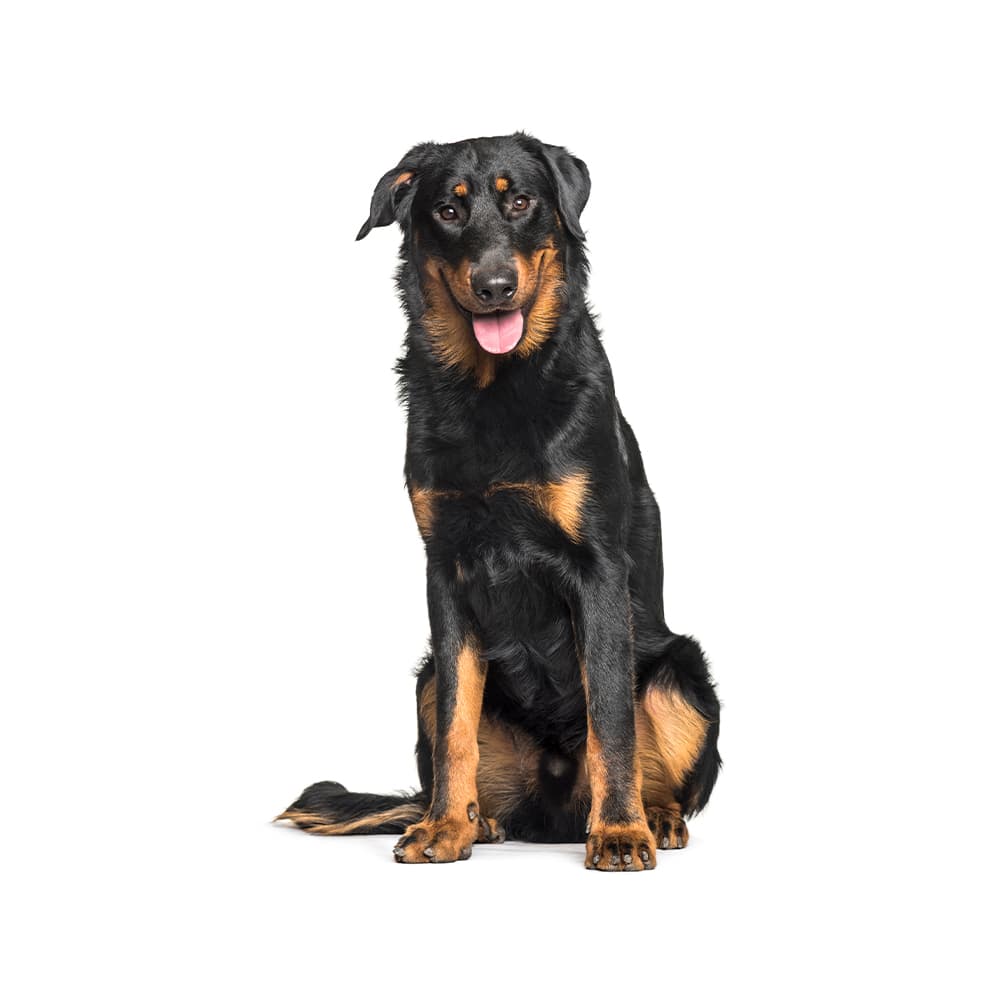Discover your dog's connection to this breed and 200+ others


Discover your dog's connection to this breed and 200+ others



The Beauceron is a breed of large herding dogs that originated in France, specifically in the region known as La Beauce, from which it derives its name. The Beauceron's history dates back several centuries, with the earliest records appearing in the late 1500s. This breed was initially used for various roles such as herding livestock, guarding properties, and even participating in military operations. In the late 19th century, French breeders standardized the Beauceron breed, with the first breed standard established in 1897.
Beaucerons can suffer from atopic dermatitis, dermatomyositis, elbow and hip dysplasia,
epidermolysis bullosa, epidermolysis bullosa (dystrophic), hypothyroidism, mast cell tumor, mMerling, patellar luxation, and squamous cell carcinoma (toes). The breed is susceptible to bloat, also known as gastric dilation volvulus (GDV). This is a life-threatening condition that can come on suddenly, so it’s important to know the warning signs and get an affected dog immediate veterinary care. Genetic testing is recommended, including for the following additional conditions: hyperuricosuria, degenerative myelopathy, and progressive rod-cone degeneration.
Beaucerons are known for their intelligence, agility, and courage. They are protective and loyal, making them excellent family dogs and home guardians. However, they are not recommended for novice dog owners due to their high energy levels and need for mental stimulation. They require plenty of exercise and love participating in activities such as obedience, agility, and tracking competitions.
It's important to note that early socialization and training are critical for this breed to ensure they grow into well-rounded dogs. They can be reserved with strangers but are generally good with children and other animals if properly socialized.
A canine genetic lineage is a group of individuals or entire breeds that descended from common ancestors predating modern breed formation. Often these lineages are associated with a ‘type’ of dog with a unique historical working role and associated behaviors (e.g., herding, scent hunting, etc.).
Herding dogs are known for their high intelligence, trainability, and strong work ethic. These breeds originated in areas where managing livestock was an important part of daily life and had large pastoral lands. These breeds were specifically developed to help farmers and shepherds move, manage, and protect herds of livestock. Breeds within the herding dog lineage are agile and are known to have a natural herding instinct, where they like to keep their animals together. They are loyal and attentive to their handlers and are eager to please and are also highly aware of their environment. Many breeds within this linage have gone on to work as rescue and police dogs.
Example breeds with ancestry from this lineage include Border Collie, Cardigan Welsh Corgi, and German Shepherd.
The squirrel-red fur on the feet of the Beauceron gave rise to its French nickname, "Bas-Rouge", which translates as "red stockings".
According to the AKC, an 1863 Universal Exposition in Paris featured dogs recognizable as Beaucerons with their upright ears, black with rust markings, and a "wolflike" build. The dogs in thta show were unlike the modern Beaucerons we see today, as they had a narrower muzzle and a rougher coat.
https://www.akc.org/dog-breeds/beauceron/ American Beauceron Club https://www.beauce.org/
https://www.hillspet.com/dog-care/dog-breeds/beauceron
https://vgl.ucdavis.edu/breed/beauceron
https://www.ofa.org/recommended-tests?breed=BEU
Recommended by top vets with decades of experience
21 breeds
64 genetic health markers
50 genetic trait markers
